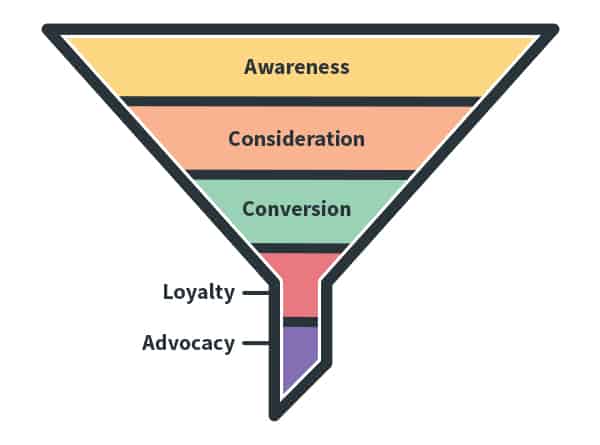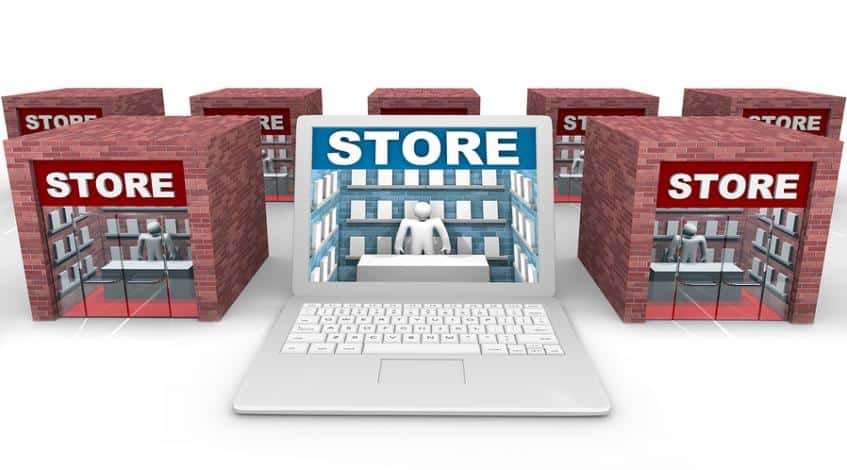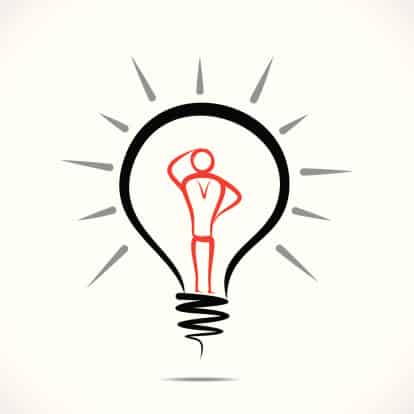What is the Marketing Funnel?
A marketing funnel is a break down of the path customers take starting from the awareness of your business to the purchase (or form fill, lead generated, conversion) on your website.
In the marketing funnel, a potential customer becomes aware of your business through a Google Ad or a highly ranked webpage on the SERP. As they move down the funnel, the interaction with the customer becomes more personalized and eventually leads them to convert on your website.

As marketers, you should cast a wide net to capture as many leads as possible. This can be tricky because you want to ensure that you are generating high volumes of traffic to your site, but you also want to generate quality traffic that pulls in your target audience. As more quality traffic is generated to your site, customers will tend to want to explore more, which can potentially lead to conversions.
How does the Marketing Funnel Work?
Every marketing funnel is different depending on the industry that you are in or the type of service, product, or solution that is offered. However, the strategy behind how to form a marketing funnel and understanding how they work is nearly identical.
To better understand how a marketing funnel work, let’s think of it as a series of steps that a user must go through to become a customer. Think about your own shopping experiences:
- You visit a store
- You view a product you want or are looking for
- You potentially consider other products
- You add the product to your cart
- You purchase the product
The underlying idea is true regardless of if you’re shopping online or in a brick and mortar store. You start off as a user, you become enticed by relatable words and catchy copy, you fill out a form, and then you become a lead or a customer.

With that being said, there are a lot of things that influence your purchasing decisions. That is why it is important to break down every stage of the marketing funnel to get a better idea of how or why someone would even consider providing you with the information necessary to turn into a customer.
What are the Stages of the Marketing Funnel?
Depending on your own interpretation, the marketing funnel can be anywhere between three and six stages. This funnel can mimic the sales process, but it can also be viewed by search marketers as a lead generation funnel as well.
Sales Process and the Marketing Funnel
Awareness
During the awareness stage of the marketing funnel, marketers are attempting to capture as many impressions as possible. Think of this as “the importance of a first impression”. Whether you are posting a blog or creating a highly valuable solutions page, marketers must be aware of the importance of user experience and its effect on impressions when promoting their brand.
Advertisements, blog posts, and social media posts are only a select few examples of content that are utilized in the awareness stage of the marketing funnel. High-quality awareness campaigns can result in lead generation; however, the importance of this stage is the ability to generate further interest in the brand, product, or service.
![]()
Interest and Consideration
Once a user becomes aware of your product, brand, or service, a sense of interest is generated. This portion of the sales process is where they will dig deeper into who you are, what your company does, and learns more about the product or service.
Once the customer generates interest and has done their research, they will begin considering your product or service as a viable option. The customer is well aware of your product; however, they may decide to leave your website and begin other products or services as well.
The potential customer may begin reading reviews online, asking a friend for recommendations, or searching Google for other options. Here, they may weigh a variety of factors against each other:
- Price
- Quality of Reviews
- Types of Customers
- Industries Served
- Quality of Products
If they are more impressed with your product or service, they will most likely come back to your site and review their previous intention to potentially buy.

Purchase
At this stage, the customer has weighed all options and has come to a clear conclusion that your product or service fits the need or fixes the problem that they may have. However, there may be a few things that hold the customer back, and that revolves around the experience that the customer has when checking out or filling out the form.
The content on the site and the user’s experience during this stage needs to be streamlined and easy, but it also needs to create a sense of confidence that the customer is making the correct decision.
For example, showcasing quotes from previous customers or a case study showing the success that another customer had can create this confidence that pushes them through the buying cycle. It’s important to create an experience that is both memorable and trustworthy.
Once this confidence is instilled in the customer, they are much more likely to go through the process of purchasing.

Post-Purchase Evaluation
Once the purchase has been completed, how a company interacts with the customer can define whether or not they will become a loyal customer and an advocate. Taking a thoughtful and inviting approach to make them feel a part of the family can go a long way.
The more post-purchase support that you provide can help go a long way; however, the best way to generate loyalty is to create a great product or service.
Marketing Funnel Stages for B2B Marketers
As a B2B search marketer, we define the purpose of the marketing funnel as a lead generation tool. There are 3 stages of the funnel that are important to understand. With that being said, this gives a company three opportunities to capture leads and turn them into customers.
Top-of-the-Funnel (ToFu)
At the top-of-the-funnel (ToFu), users are usually looking for information. Most of the searches that are attributed at this stage are educational and informational, which generally take the shape of a blog or a glossary.
As a business, it is important to develop your best content marketing strategies are top of the funnel searches because they tend to have the highest volume of searches. Being able to capture a market share of these high volume searches is crucial because it brings awareness to your brand at a higher volume.
If you properly targeting the correct keywords and search queries, you can generate a high volume of high-quality traffic to move down the marketing funnel towards lead generation.
Middle-of-the-Funnel (MoFu)
Once you have gathered traffic from top-of-the-funnel content, you need to direct the user to another portion of your website. You must ensure that you offer a next step that matches their next step. Most of the time, users aren’t ready to purchase at this step of the funnel.
Gated Content such as webinars, whitepapers, and guides can be a highly valuable offer to the user because it gives them the opportunity to learn more about the top-of-the-funnel subject while keeping them on your website for longer.
The even more valuable part of gated content is that it can be utilized as a lead generation tool. A simple form that contains first and last name, email, and phone number can go a long way for a company.
If you choose not to direct them to gated content, including a call-to-action (or CTA) to a solutions page may be a better alternative. This way they can learn more about what your company does and how it can provide them value.
Bottom-of-the-Funnel (BoFu)
At the bottom-of-the-funnel, users are usually ready to convert. There are two different ways to generate traffic at the bottom-of-the-funnel. The first way is to generate traffic from the ToFu and MoFu, and lead them down the marketing funnel while gaining trust. The second way is to ensure your core solutions pages are targeting BoFu keywords that lead them directly from the SERP.
BoFu traffic tends to convert at a higher rate, as it is more targeted; however, it usually comes at the cost of being lower in volume.
Either way, once a user reaches your core solutions page, creating an easy path to your conversion page (request a demo, contact us, free trial, etc) will ensure a seamless way to generate conversions and a high rate.
How Do I Utilize the Marketing Funnel Better?
Not only understanding but recognizing how to maximize your efforts within the marketing funnel is how a business generates leads and eventually close deals.
Is your business having troubles generating high volumes of leads? You deserve the better! To learn more about how Directive can maximize your ability to close deals, get a free proposal today!